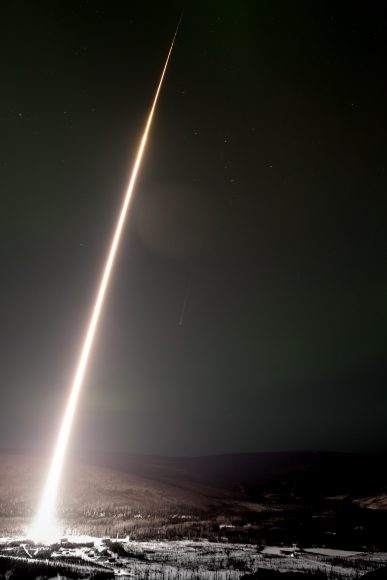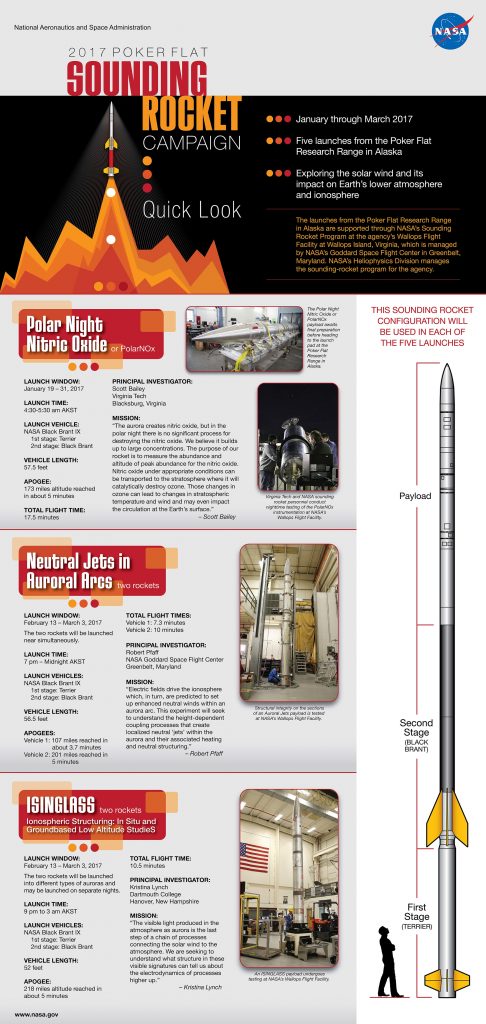Not only is it aurora season in Alaska, its sounding rocket season! NASA started launching a series of five sounding rockets from the Poker Flat Research Range in Alaska to study the aurora. The first of these rockets for this year, a Black Brant IX, was launched in the early morning hours of February 22, 2017.
The instrument on board was an Ionospheric Structuring: In Situ and Groundbased Low Altitude StudieS (ISINGLASS) instrumented payload, which studies the structure of an aurora.

The Black Brant IX sounding rocket carried instruments to an altitude of 225 miles as part of the Ionospheric Structuring: In Situ and Groundbased Low Altitude StudieS or ISINGLASS mission. Credit: NASA/Terry Zaperach.
This is not the first sounding rocket flight from Poker Flats to launch into an aurora. Starting in 2009, this research has been taking place to help refine current models of aurora structure, and provide insight on the high-frequency waves and turbulence generated by aurorae. This helps us to better understand the space weather caused by the charged particles that come from the Sun and how it impacts Earth's lower atmosphere and ionosphere.
"The visible light produced in the atmosphere as aurora is the last step of a chain of processes connecting the solar wind to the atmosphere," said Kristina Lynch, ISINGLASS principal investigator from Dartmouth College. "We are seeking to understand what structure in these visible signatures can tell us about the electrodynamics of processes higher up."
While humans don't feel any of these effects directly, the electronic systems in our satellites do, and as our reliance on satellite technologies grow, researchers want to have all the data they can to help avert problems than can be caused by space weather.
The rocket sent a stream of real-time data back before landing about 200 miles downrange shortly after the launch.
The launch window for the remaining rockets runs through March 3. ISINGLASS will fly into what is known as a dynamic Alfenic curtain, which is a form of electromagnetic energy thought to be a key driver of "discrete" aurora – the typical, well-defined band of shimmering lights about six miles thick and stretching east to west from horizon to horizon.
NASA says that the five launches in the 2017 sounding rocket campaign will add to our body of information about this space through which our spacecraft and astronauts travel near Earth. By studying the interaction of the sun and its solar wind with Earth's upper atmosphere, scientists are also able to apply the knowledge to other planetary bodies -- helping us understand these interactions throughout the universe as well.
Here's an infographic from NASA about the 2017 sounding rocket launches from Poker Flats:

Read more: NASA
No comments:
Post a Comment